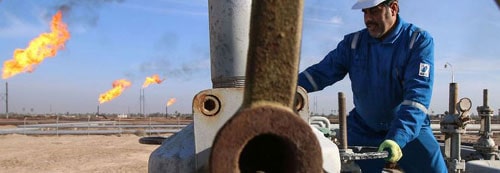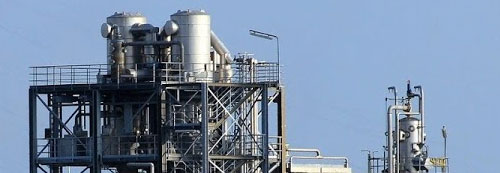
联系我们
Crude oil is not only a highly sought-after commodity in the world, but also a must for economic activities in energy supply, industrial, and transportation use.

Crude oil and natural gas are the most popular commodities. They generate huge trading volume at all times, providing online traders with numerous trading opportunities. Whether it is US crude oil (WTI), Brent crude oil (BRENT) or natural gas (NATGAS), energy commodities are quoted in US dollars.
When you are trading energy CFDs, the exchange rate with the u.s dollar is a key factor to keep an eye on. Our bulk commodities offer both "buy" and "sell" prices. The difference between the buying price and the selling price is called "spread".
Suppose you think that the price of WTI crude oil will rise, so you buy 1 lot of WTI at a price of $54.17. This means that when the market moves in the direction you expect, for every 0.01 change in the price, your profit is $1.

Crude oil is used in manufacturing, transportation and energy production. Its supply is variable and its storage capacity is limited, which has a huge impact on the global economy. Crude oil is very popular among traders. Its supply and demand are constantly changing, so there will always be price fluctuations and high liquidity.
You do not need to deal with large amounts of crude oil to conduct oil market transactions. Because most oil and gas transactions are realized through futures.
Like stocks, crude oil is also traded on exchanges. But unlike stocks, they are traded on the basis of crude oil. The forms of crude oil mined all over the world are not exactly the same. Through crude oil benchmarks, traders can quickly identify the quality of the oil they buy and the location of the drilling. The crude oil spot price represents the cost of buying or selling crude oil and delivering it immediately or on the spot (rather than delivering it on a set date in the future). Therefore, the futures price reflects the market’s belief that the value of crude oil when it expires in the future, and the spot price reflects the current value of crude oil.

This is a crude oil produced in the United States, also known as Texas Light Sweet Crude Oil. The so-called "light" means that it is less dense than most OPEC crude oils, while "sweet" means that it has a lower sulfur content.

Brent Crude Oil (BRENT), referred to as "Brent", is a kind of crude oil produced in the North Sea. Brent crude oil is also described as "light sweet crude", just like WTI.
Crude oil is one of the most traded commodities in the world, and the crude oil market is undergoing new changes every day
Crude oil extraction and refining processes are expensive. Because oil reserves are located deep underground, extracting crude oil from underground requires a relatively huge price. Any technological progress or setbacks in the mining process have a direct impact on crude oil prices.
The largest consumer of and demand for crude oil is the United States, followed by Japan, China, and European industrial countries such as Germany and the United Kingdom. The industrial and economic sectors of these countries have great demand for crude oil. Therefore, their demand will affect the global crude oil price.
No matter how the supply changes, the availability of crude oil will be affected by political and economic factors. Rising inflation, unemployment and poverty rates may lead to a decline in consumption levels, making it impossible for those affected to afford certain products. Political unrest and rebellion may also lead to a reduction in crude oil imports and the smuggling of imported commodities.
Natural disasters such as earthquakes and hurricanes are unpredictable events. The losses to drilling sites and refineries caused by these disasters may hinder and delay crude oil production. Fires and mechanical failures can also cause delays in production due to the need for time to recover. Delays caused by these environmental factors will reduce the supply of crude oil, leading to price increases.

The US Department of Energy's crude oil inventory report released every Wednesday. The report reflects the inventory of US crude oil. Since the United States is the largest consumer of crude oil, it is necessary for traders to analyze their demand by regularly understanding crude oil inventory.

The crude oil report you should study is the monthly and annual reports issued by OPEC. These reports provide a way for you to understand the production goals of OPEC member countries. Their production targets and quotas reflect the current level of crude oil supply and demand in the world market.